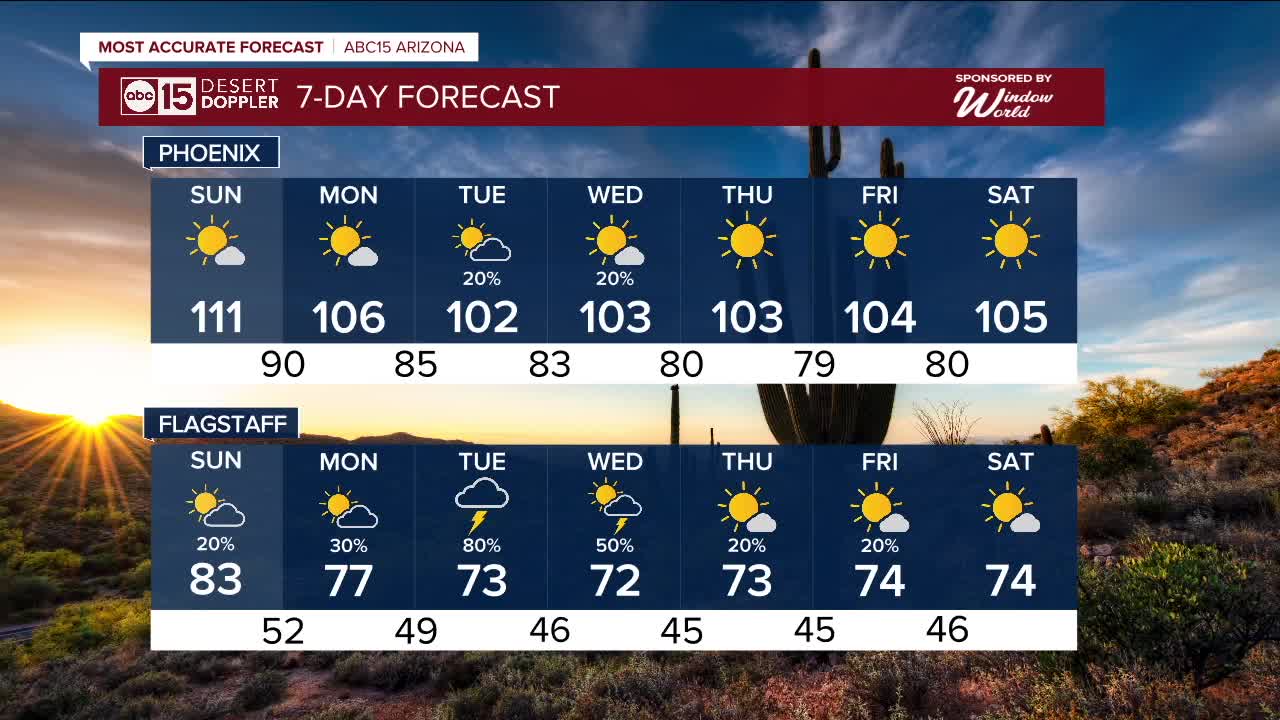Understanding The Absence Of Excessive Heat Warnings In Weather Reports

Table of Contents
Thresholds and Criteria for Excessive Heat Warnings
Meteorological agencies worldwide use specific criteria to issue excessive heat warnings and heat advisories. These aren't arbitrary; they're based on scientific data and established thresholds. The decision to issue a warning isn't simply about the temperature reading on a thermometer. Several factors play a crucial role:
-
Temperature Thresholds Vary: The temperature threshold for an excessive heat warning varies significantly by region and country. What constitutes "excessive heat" in Arizona is different from what might trigger a warning in Maine. This is due to factors such as acclimatization and typical summer temperatures.
-
Heat Index is Key: The heat index is a crucial factor. This measurement combines air temperature and relative humidity to reflect the human-perceived temperature. High humidity makes it much harder for the body to cool itself through sweating, leading to a greater risk of heatstroke, even at seemingly moderate temperatures.
-
Duration Matters: A single day of high temperatures might not trigger a warning, but several consecutive days of extreme heat will certainly increase the risk. The duration of high temperatures is a critical consideration when determining whether to issue an excessive heat warning.
-
Local Variations: Local health authorities might have different thresholds based on their specific populations' vulnerabilities. Areas with a high percentage of elderly residents or those with pre-existing health conditions might issue warnings at lower temperatures.
Data Limitations and Forecasting Challenges
While weather forecasting has advanced significantly, accurately predicting extreme heat events remains challenging. Several factors contribute to this:
-
Model Limitations: Weather forecasting models, while constantly improving, still have limitations in predicting the precise intensity and duration of heat waves. Micro-level variations in temperature are difficult to capture with large-scale models.
-
Urban Heat Islands: Urban areas experience the urban heat island effect, where built environments absorb and retain heat, leading to significantly higher temperatures than surrounding rural areas. This makes accurate forecasting for specific urban locations challenging.
-
Topographical Influences: Hills, valleys, and other topographical features can significantly impact local temperatures. A weather station on a hilltop might register a different temperature than one located in a valley.
-
Data Gaps: Weather stations aren't evenly distributed, and data from a limited number of stations might not represent the temperature variations across an entire region.
The Role of Human Factors and Public Health
Issuing excessive heat warnings is not solely a meteorological issue. Human factors and public health considerations play a substantial role.
-
Public Awareness: Effective public education campaigns are vital. Knowing the dangers of extreme heat and how to protect oneself is crucial. Information on recognizing symptoms of heatstroke is a key component of heat safety.
-
Public Health Guidance: Public health agencies provide critical advice on heat preparedness and mitigation strategies, including staying hydrated, limiting strenuous activity, and seeking shade during peak heat hours.
-
Community Resources: Many localities provide cooling centers and other resources to help vulnerable populations cope with extreme heat. Being aware of these resources is essential.
-
Preventable Illnesses: Heat-related illnesses are largely preventable with proper awareness and action. Understanding the risks and taking precautions is key.
Understanding Different Types of Heat Alerts and Advisories
Different levels of alerts are used to communicate the severity of a heat event:
-
Heat Advisory: A heat advisory indicates that the potential for dangerous heat conditions exists. People are advised to take precautions.
-
Heat Warning: A heat warning signifies that dangerous heat conditions are already occurring. Action should be taken to protect oneself and others.
-
Heat Emergency: A heat emergency signals a life-threatening situation, requiring immediate action.
Conclusion: Staying Safe Despite the Absence of Explicit Excessive Heat Warnings
The absence of an official excessive heat warning doesn't mean the heat isn't dangerous. The complexity of forecasting and various contributing factors mean that warnings might not always be issued, even in extremely hot conditions. Therefore, personal responsibility in heat safety is paramount. Actively monitor weather reports and local health advisories for excessive heat warnings and heat advisories, utilize reliable weather apps, and stay informed through local news. Recognize the symptoms of heatstroke and take preventative measures, such as staying hydrated, seeking shade, and limiting strenuous activities during peak heat hours. Always be aware of potential heat waves and take proactive steps to prevent heat-related illness. Prioritize your heat safety and the heat safety of your family. Don't wait for an excessive heat warning; take action to protect yourself from the dangers of extreme heat.

Featured Posts
-
 Donald Trump Y La Lucha Contra La Reventa Abusiva De Boletos A Traves De Ticketmaster
May 30, 2025
Donald Trump Y La Lucha Contra La Reventa Abusiva De Boletos A Traves De Ticketmaster
May 30, 2025 -
 Real Madrids Pursuit Of Manchester United Player A 90m Transfer Report
May 30, 2025
Real Madrids Pursuit Of Manchester United Player A 90m Transfer Report
May 30, 2025 -
 Competitive Landscape Novo Nordisks Ozempic And The Weight Loss Drug Race
May 30, 2025
Competitive Landscape Novo Nordisks Ozempic And The Weight Loss Drug Race
May 30, 2025 -
 Kyriakatiko Tileoptiko Programma 4 And 5 Maioy
May 30, 2025
Kyriakatiko Tileoptiko Programma 4 And 5 Maioy
May 30, 2025 -
 Somerset In Pictures A Photographic Journey Through Baths Glory
May 30, 2025
Somerset In Pictures A Photographic Journey Through Baths Glory
May 30, 2025
